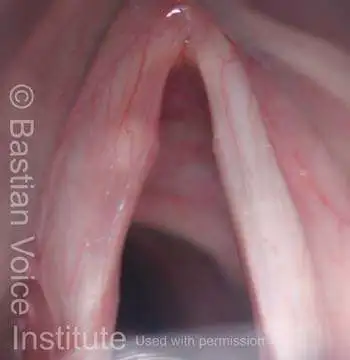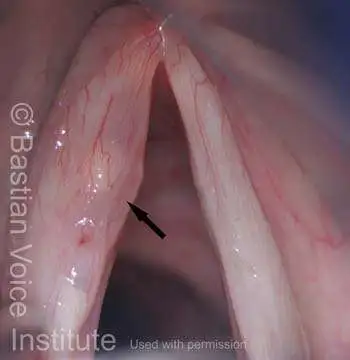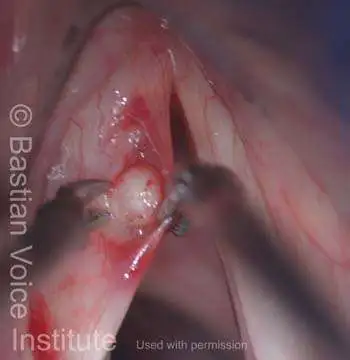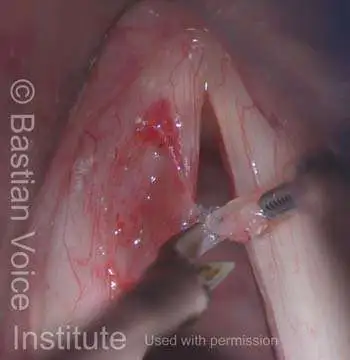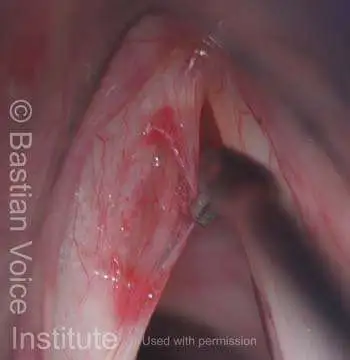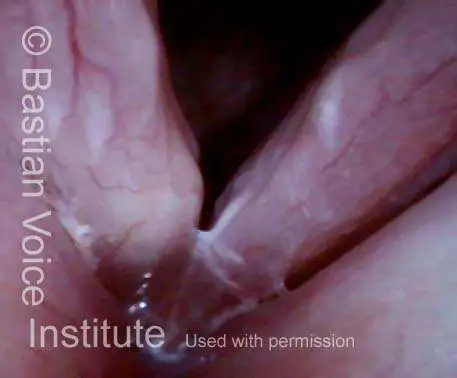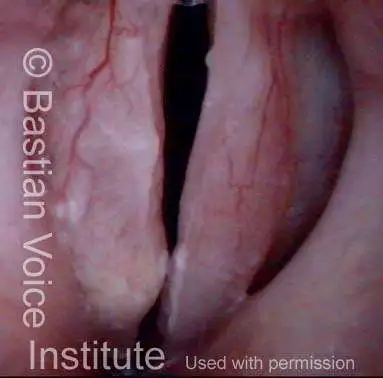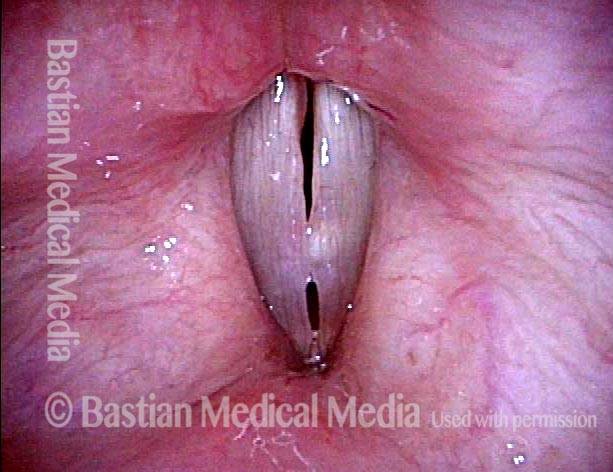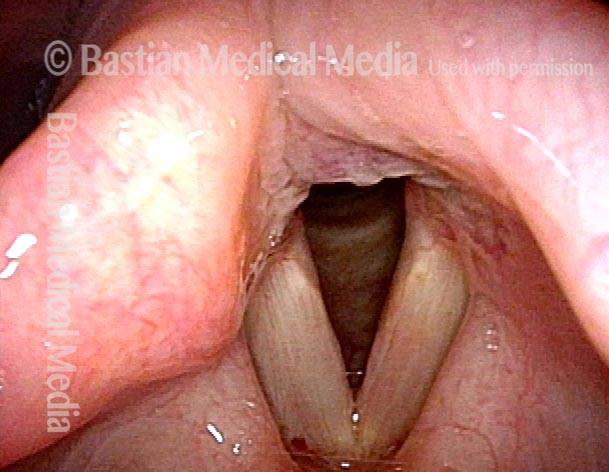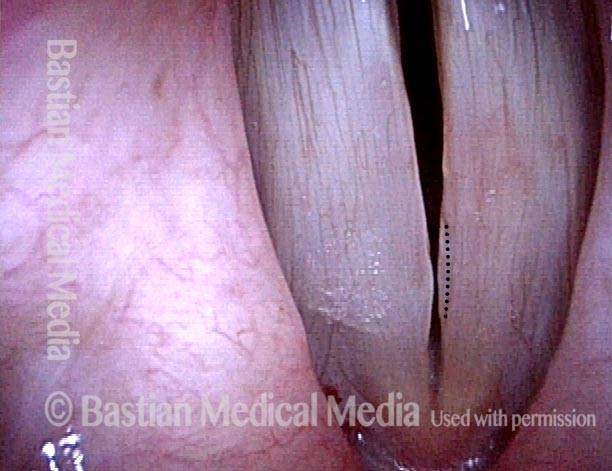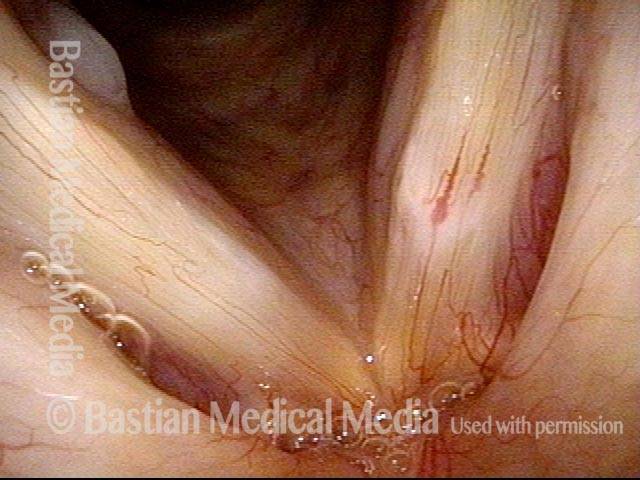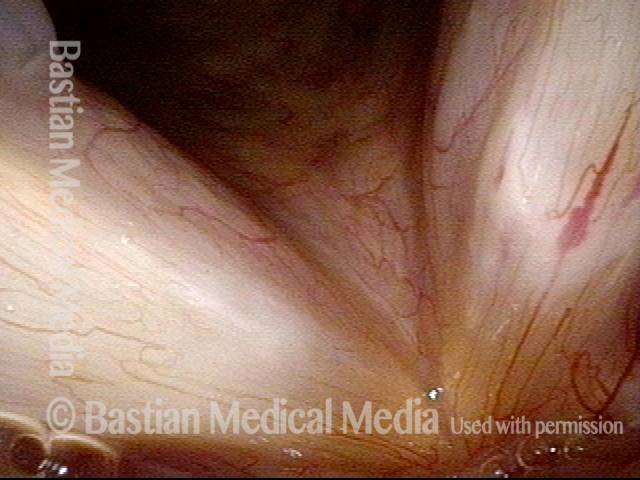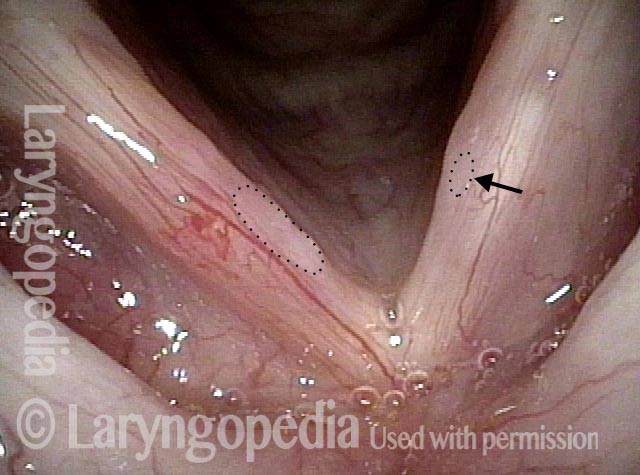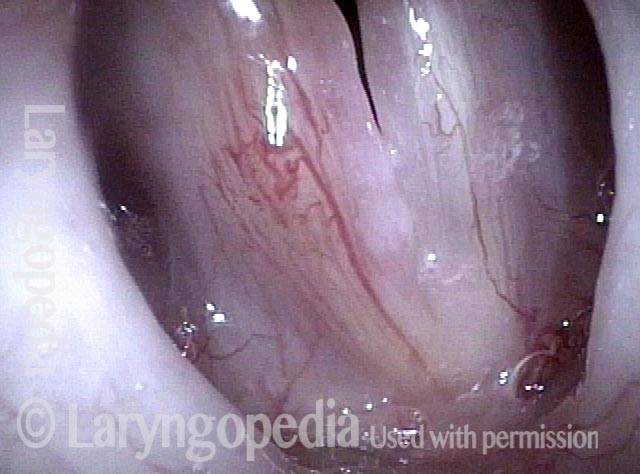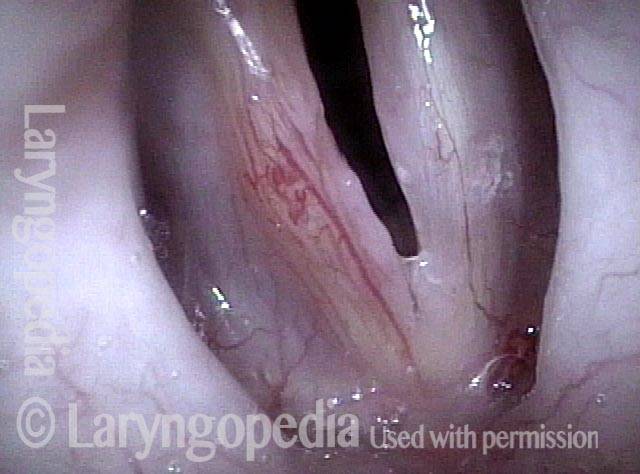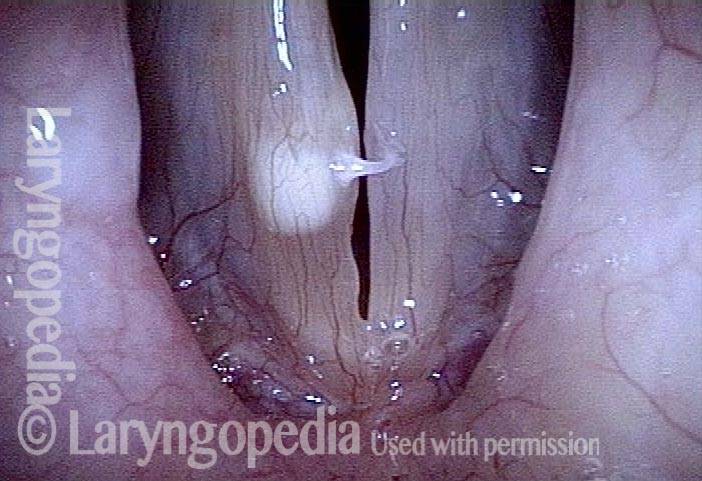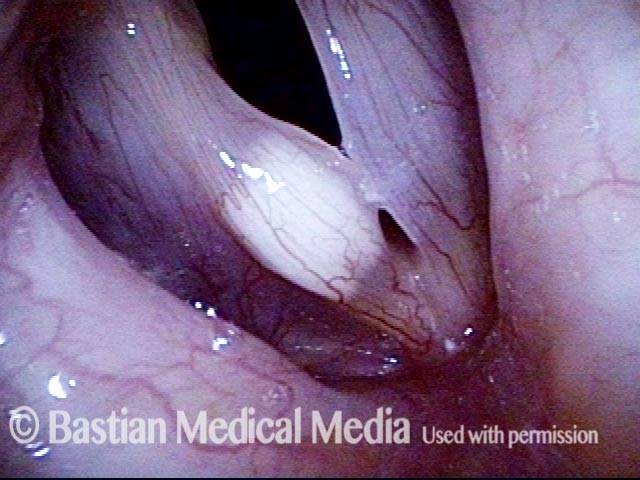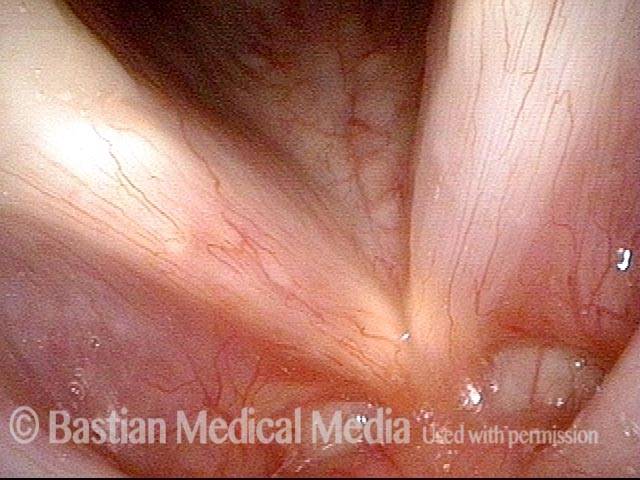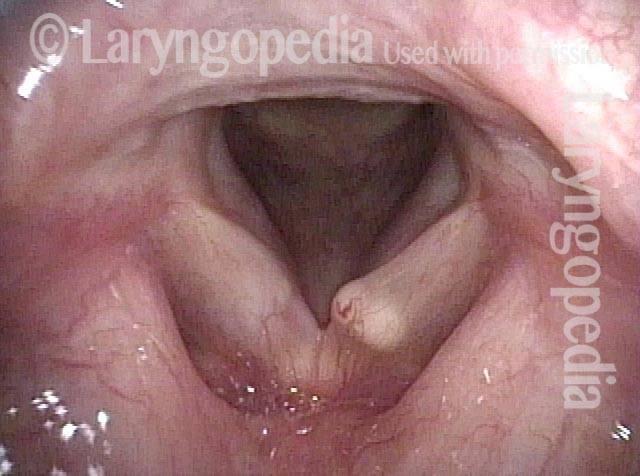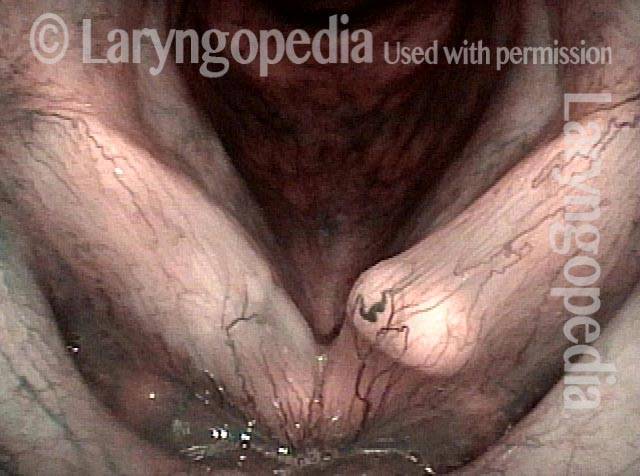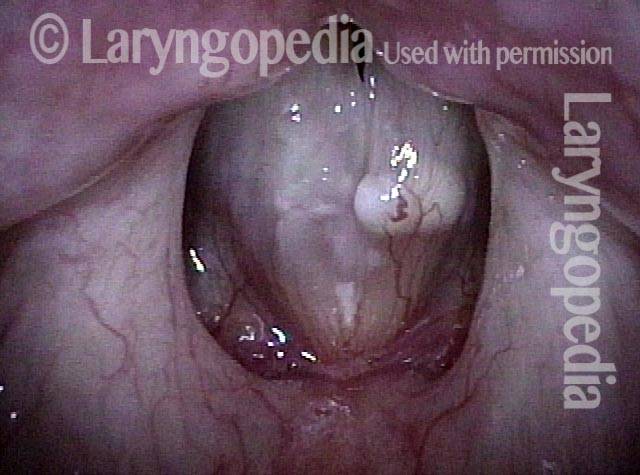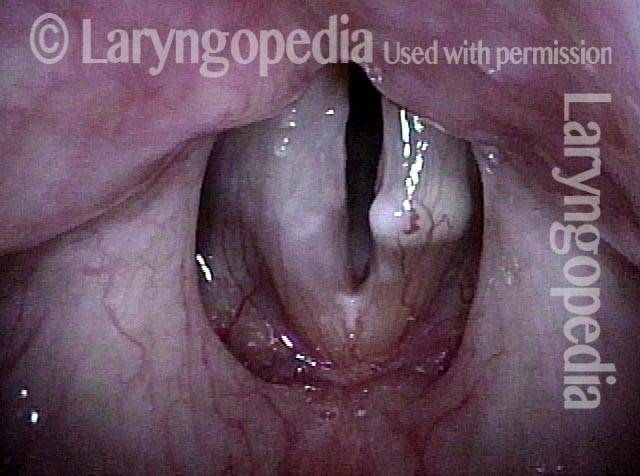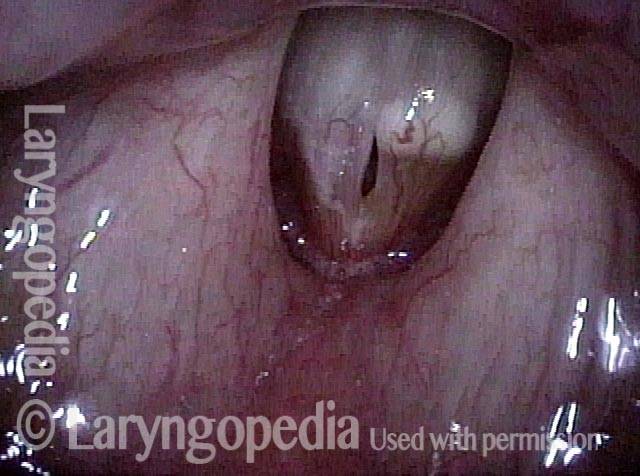Cisti Epidermoide
Una cisti epidermoide è una cisti che ha una parete rivestita da epitelio squamoso e quindi accumula cheratina. Può anche essere chiamata cisti epidermica, cisti di inclusione epidermica o cisti di cheratina. Nella laringe, una cisti epidermoide si verifica tipicamente in una o entrambe le corde vocali. Queste cisti epidermoidi sono solitamente di colore bianco e sono spesso viste in caso di eccessi vocali.
Come si forma una cisti epidermoide
L’epitelio è il tessuto che costituisce lo strato più esterno della pelle ed è anche lo strato superiore del tessuto che riveste l’interno del corpo. Il tessuto epiteliale produce una proteina chiamata cheratina.
Se uno qualsiasi di questi tessuti epiteliali viene in qualche modo sepolto nello strato subepiteliale, la cheratina prodotta potrebbe rimanere intrappolata e accumularsi all’interno dello strato subepiteliale, causando una cisti epidermoide.
Nelle corde vocali, una cisti epidermoide può talvolta verificarsi semplicemente a causa di un difetto congenito: le cellule epiteliali produttrici di cheratina sono sepolte nello strato sottoepiteliale fin dalla nascita. Alcuni ritengono che questa sia la spiegazione anche quando la manifestazione iniziale della raucedine si manifesta solo in età adulta.
In questi casi, tuttavia, è più logico considerare l’uso eccessivo della voce come il fattore chiave, forse perché le cellule epiteliali possono rimanere sepolte nello strato sottoepiteliale mentre la mucosa delle corde vocali guarisce in risposta a una lesione da uso eccessivo della voce.
Sintomi vocali di una cisti epidermoide
An epidermoid cyst may cause vocal limitations similar to that of vocal nodules. However, patients with epidermoid cysts are more likely to experience diplophonia in the upper voice, and as the voice ascends in pitch, its impairment may manifest itself much more abruptly and severely at a particular frequency, as compared to most patients with nodules, who experience a more gradual transition to increasing impairment as they ascend in pitch.
Aspetto di una cisti epidermoide
An epidermoid cyst of the vocal cord is generally most visible on the cord’s upper surface, and is whitish in color. In comparison with mucus retention cysts, epidermoid cysts project less from the cord, and when smaller, they can be quite subtle and easy to miss.
Sometimes an epidermoid cyst will have spontaneously ruptured but still retain some of the accumulated keratin (an open cyst); in this case, the cyst’s outline may be more subtle, and usually assumes an oval shape with the long axis oriented anteriorly and posteriorly. An open cyst may also produce a mottled appearance.
Una cisti epidermoide della corda vocale è generalmente più visibile sulla superficie superiore della corda ed è di colore biancastro. Rispetto alle cisti da ritenzione di muco, le cisti epidermoidi sporgono meno dal cordone e, quando sono più piccole, possono essere piuttosto sottili e facili da non notare.
A volte una cisti epidermoide si rompe spontaneamente ma conserva ancora parte della cheratina accumulata (una cisti aperta); in questo caso il contorno della cisti può essere più sottile, e solitamente assume una forma ovale con l’asse lungo orientato anteriormente e posteriormente. Una cisti aperta può anche produrre un aspetto chiazzato.
Trattamento per una cisti epidermoide
La logopedia è importante per i pazienti che esagerano con la voce, per aiutare a prevenire il verificarsi futuro di questa o altre lesioni e lesioni legate all’uso eccessivo della voce, ma non risolverà la cisti. È possibile eseguire un intervento chirurgico per rimuovere la cisti. Ciò richiede un’incisione e quindi la dissezione dell’intera sfera intatta della cisti.
L’intervento è tecnicamente molto più difficile della rimozione di noduli o polipi ed è più probabile che causi rigidità cronica della mucosa danneggiata. Tuttavia, i risultati possono essere molto buoni, soprattutto se la mucosa sovrastante è relativamente spessa.
Rimozione della cisti
Cyst removal (1 of 7)
Cyst removal (1 of 7)
Cyst removal (2 of 7)
Cyst removal (2 of 7)
Cyst removal (3 of 7)
Cyst removal (3 of 7)
Cyst removal (4 of 7)
Cyst removal (4 of 7)
Cyst removal (5 of 7)
Cyst removal (5 of 7)
Cyst removal (6 of 7)
Cyst removal (6 of 7)
Cyst removal (7 of 7)
Cyst removal (7 of 7)
Cisti epidermoide
Epidermoid cyst (1 of 2)
Epidermoid cyst (1 of 2)
Epidermoid cyst (2 of 2)
Epidermoid cyst (2 of 2)
Esempio 2
Teacher with longstanding hoarseness (1 of 4)
Teacher with longstanding hoarseness (1 of 4)
Epidermoid cyst and polypoid nodule seen (2 of 4)
Epidermoid cyst and polypoid nodule seen (2 of 4)
Six days post-surgery, voice improved (3 of 4)
Six days post-surgery, voice improved (3 of 4)
Expected early postsurgical swelling (4 of 4)
Expected early postsurgical swelling (4 of 4)
Possibile cisti epidermoide aperta
Capillary ectasia and white submucosal abnormality (1 of 3)
Capillary ectasia and white submucosal abnormality (1 of 3)
Prephonatory view, mtd (2 of 3)
Prephonatory view, mtd (2 of 3)
Open cyst (3 of 3)
Open cyst (3 of 3)
Cisti e solco aperti nello stesso paziente
Hoarse voice (1 of 4)
Hoarse voice (1 of 4)
Cyst + sulcus (2 of 4)
Cyst + sulcus (2 of 4)
Closed phase (3 of 4)
Closed phase (3 of 4)
Cisti epidermoide, prima e dopo la rimozione
Epidermoid cyst (1 of 4)
Epidermoid cyst (1 of 4)
Phonatory view (2 of 4)
Phonatory view (2 of 4)
Post microsurgery (3 of 4)
Post microsurgery (3 of 4)
4 months post surgery (4 of 4)
4 months post surgery (4 of 4)
Esempio 2
Epidermoid cyst (1 of 3)
Epidermoid cyst (1 of 3)
Epidermoid cyst (2 of 3)
Epidermoid cyst (2 of 3)
Epidermoid cyst, removed (3 of 3)
Epidermoid cyst, removed (3 of 3)
Cisti epidermoide bilobata e vibrazione scintillante
Distant view (1 of 6)
Distant view (1 of 6)
Closer view, narrow band light (2 of 6)
Closer view, narrow band light (2 of 6)
Closure under strobe light (3 of 6)
Closure under strobe light (3 of 6)
Open phase (4 of 6)
Open phase (4 of 6)
An octave above (5 of 6)
An octave above (5 of 6)
“Shimmying” vocal cord (6 of 6)
“Shimmying” vocal cord (6 of 6)
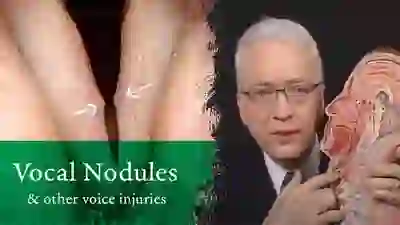
Noduli e altre lesioni delle corde vocali: come si verificano e come possono essere trattati
Questo video spiega come si verificano i noduli e altre lesioni delle corde vocali: attraverso l’eccessiva vibrazione delle corde vocali, che si verifica con un uso eccessivo della voce.
Dopo aver posto queste basi, il video prosegue esplorando il ruolo delle opzioni terapeutiche come la terapia vocale e la microchirurgia delle corde vocali.
